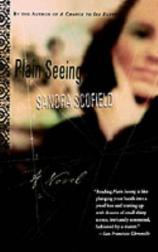Reading Group Guide
Discussion Questions
Plain Seeing

1. Emma Laura's story is firmly embedded in the story of her time. The Depression has a tragic impact on her family. The beginning of World War II gives the family a fresh start, but by then Greta's character has been irrevocably shaped by her losses. Emma Laura, on the other hand, looks at life with the insouciant optimism of youth. Remembering her youth, discuss her self-centeredness, the way it affects her family, and the ways it isolates her.
2. Scofield says Emma Laura is a kind of "myth" for her daughter. Discuss the ways that Lucy's idea of her mother is influenced by actual events in her childhood or stories she has been told, a slim string that ties her to the past.
3. How does Lucy's idea of her mother influence the way Lucy connects to other people? How does she act out the mythic characteristics she attributes to her mother? Did you lose patience with her? Sympathy?
4. Lucy believes Laurie is very much her father's daughter. Why does she think so? Do you? How does this serve to create distance between Lucy and her child? Lucy's accident serves as a turning point in her life. How does her attitude as a mother change? How does she try to reach her daughter? Is it too late?
5. Scofield says she envisioned the novel as a kind of "figure 8," in which two stories intersect and flow into one another. Note that the opening pages are the only text in the first person. Who is this narrator? Reread the passage on pp. 4-5 that begins, "I was born on August 5, 1943..." Now consider: which interpretation of the structure do you prefer: Emma Laura's story is the one that happened and that Lucy can never know--or is it the story Lucy constructs to satisfy her longing for a cohesive narrative?
Plain Seeing
- Publication Date: September 26, 2012
- Paperback: 320 pages
- Publisher: Perennial
- ISBN-10: 0060929456
- ISBN-13: 9780060929459






